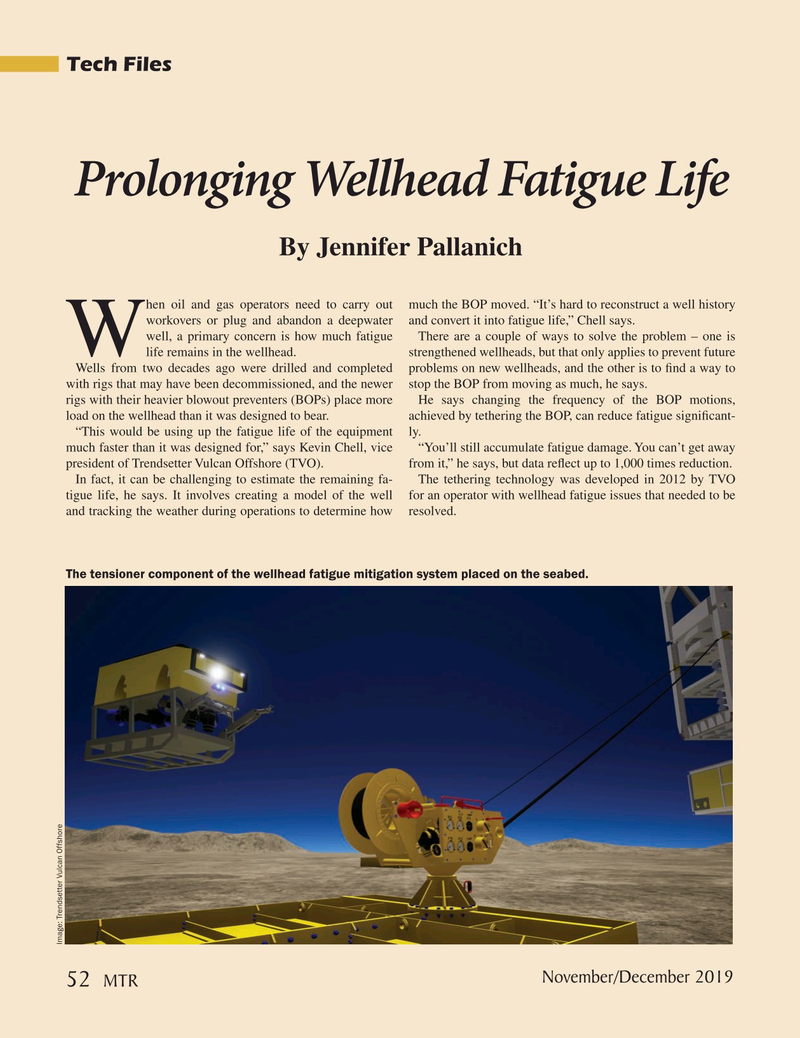
Page 52: of Marine Technology Magazine (November 2019)
MTR White Papers: Subsea Vehicles
Read this page in Pdf, Flash or Html5 edition of November 2019 Marine Technology Magazine
Tech Files
Prolonging Wellhead Fatigue Life
By Jennifer Pallanich hen oil and gas operators need to carry out much the BOP moved. “It’s hard to reconstruct a well history workovers or plug and abandon a deepwater and convert it into fatigue life,” Chell says.
well, a primary concern is how much fatigue There are a couple of ways to solve the problem – one is
Wlife remains in the wellhead. strengthened wellheads, but that only applies to prevent future
Wells from two decades ago were drilled and completed problems on new wellheads, and the other is to ? nd a way to with rigs that may have been decommissioned, and the newer stop the BOP from moving as much, he says.
rigs with their heavier blowout preventers (BOPs) place more He says changing the frequency of the BOP motions, load on the wellhead than it was designed to bear. achieved by tethering the BOP, can reduce fatigue signi? cant- “This would be using up the fatigue life of the equipment ly.
much faster than it was designed for,” says Kevin Chell, vice “You’ll still accumulate fatigue damage. You can’t get away president of Trendsetter Vulcan Offshore (TVO). from it,” he says, but data re? ect up to 1,000 times reduction.
In fact, it can be challenging to estimate the remaining fa- The tethering technology was developed in 2012 by TVO tigue life, he says. It involves creating a model of the well for an operator with wellhead fatigue issues that needed to be and tracking the weather during operations to determine how resolved.
The tensioner component of the wellhead fatigue mitigation system placed on the seabed.
Image: Trendsetter Vulcan Offshore
November/December 2019 52
MTR
MTR #9 (50-63).indd 52 12/2/2019 10:52:01 AM

 51
51

 53
53
